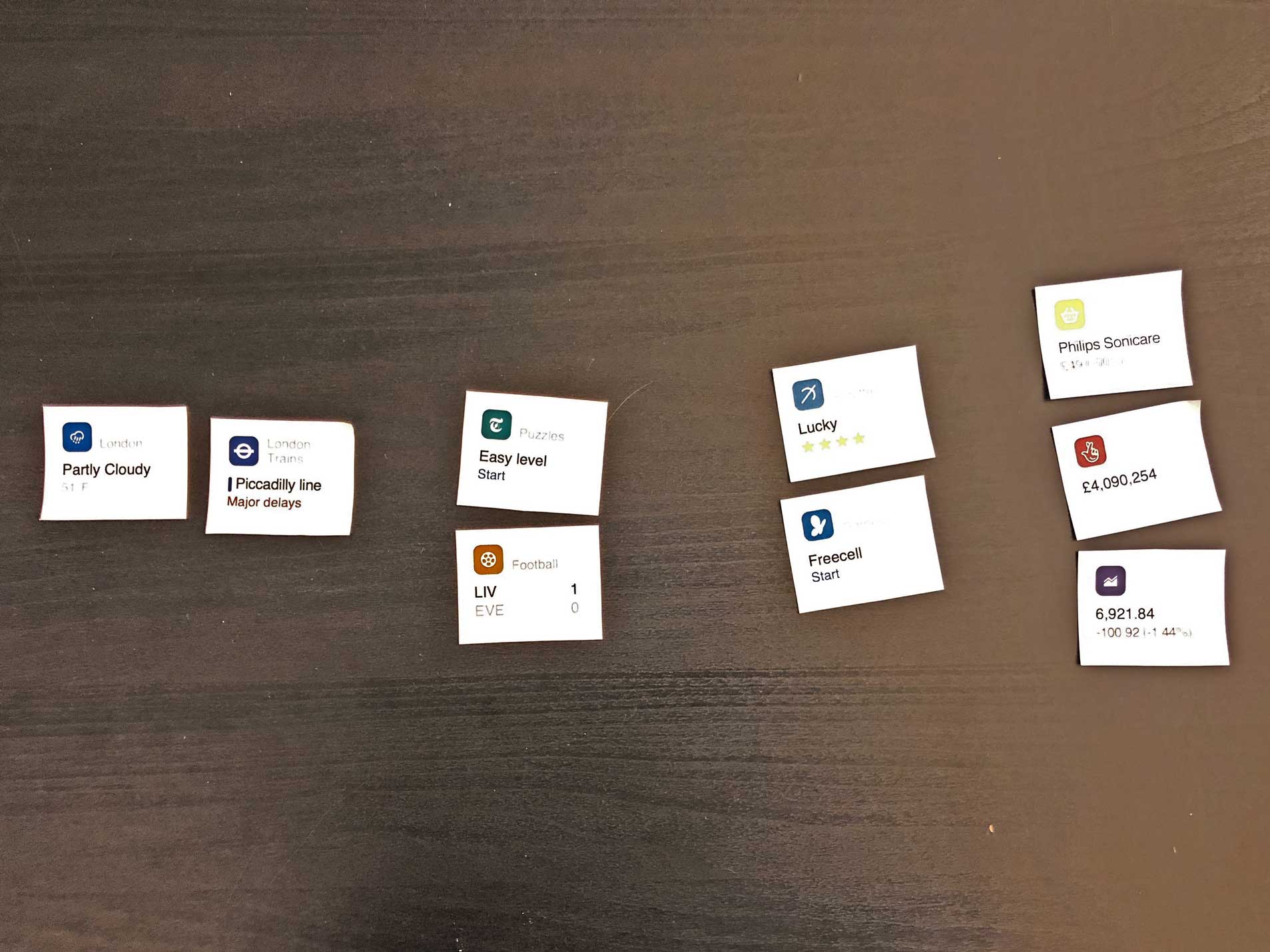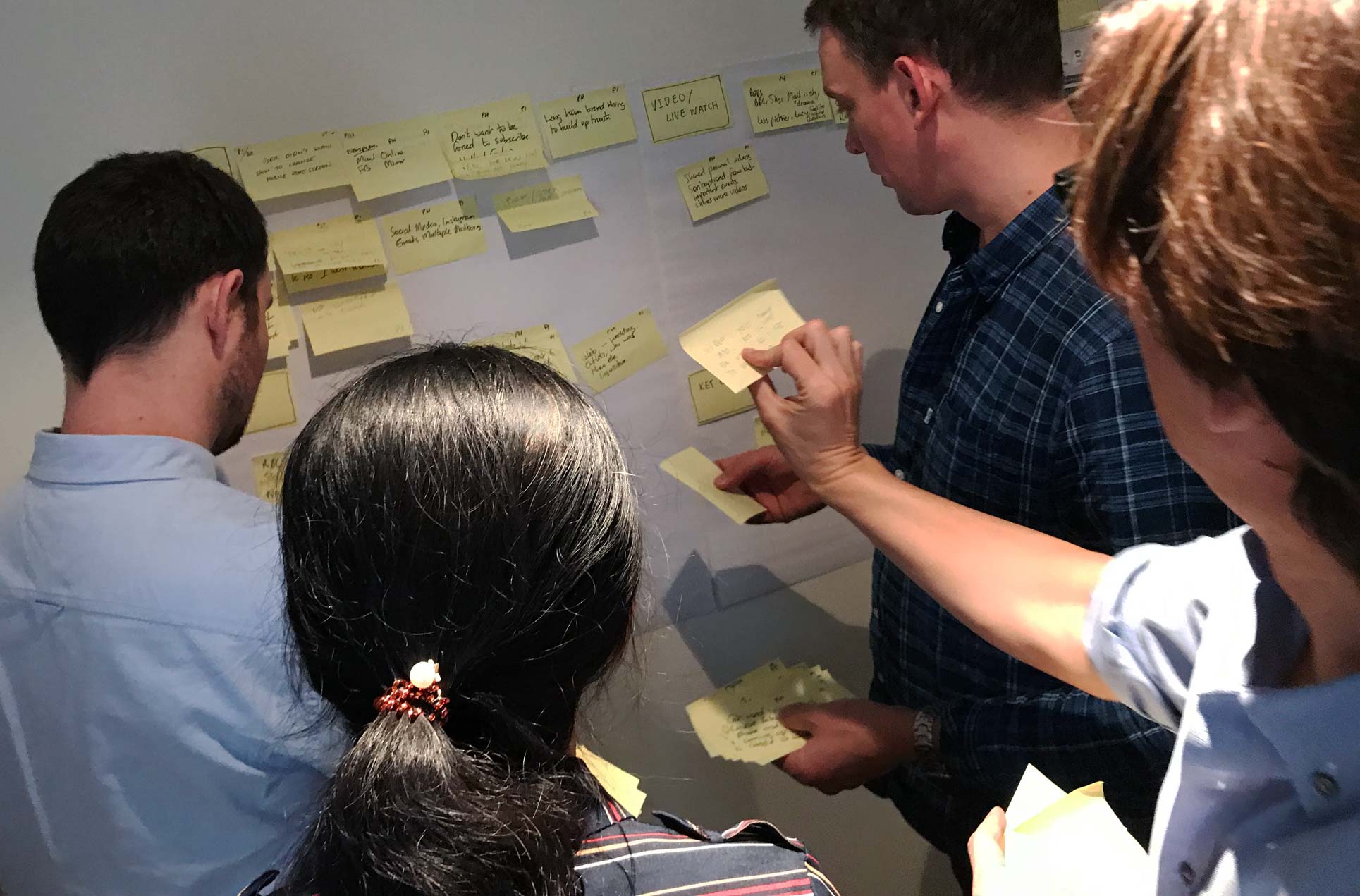As an international media brand Yahoo’s goal is to discover exactly what it is that makes customers from different countries tick.
Starting from the potentially most profitable market, we initially executed user studies in the UK, investigating how they use news and media everyday as well as their response to hypothetical designs of Yahoo news mobile web.
Within a media team based in Taiwan one designer and one project manager were working together with me besides the external recruiting agency. I was facilitating onsite data analysis workshops and finding user insights based on raw data from the UK users. The outcomes directed the next step of localisation, crafting Yahoo news into local adaptions.
Project backgrounds and objectives
Yahoo is striving to make their users more committed and to find out opportunities of 5G on real time data transmission and thus decided to localise the design of their website especially for mobiles. The project was initiated from the start page of Yahoo UK site (uk.yahoo.com), which was originally based on a global version.
Process
User study planning
Decide what is going to be investigated with users
Behaviour discovery
Understand Britons’ activities and intentions on media
New design validation
Show prototypes to users and collect feedback
Design recommendation presentation
Synthesise findings for design iteration
User study planning
Decide what is going to be investigated with users
With assistance of general managers and local project managers of Yahoo UK, ideas of Yahoo UK website (uk.yahoo.com) for mobile were collected, picked up and integrated into current design.
Meanwhile, I prepared for the user studies with one designer and one project manager on our side as well as with the recruiting agency in the UK, securing that the studies are on the right track and to the point.

Behaviour discovery
Understand Britons’ activities and intentions on media
We interviewed six Britons living in London, who like reading news on a regular base, half Yahoo users and half not. The age and gender were equally distributed.
Through mobile screen sharing of participants, key stakeholders from the UK office and me got understanding of their behaviours with a focus on data streaming features such as live media contents, video watching and online interactions, additional to their impression of the brand Yahoo.



New design validation
Show prototypes to users and collect feedback
The second half of the interview was to observe how participants interact with two different layouts of prototypes in which certain new features of utility widgets, membership (freebie redeem) and Deals of the day were designated. Participants had to do think-alouds via executing pre-defined tasks, informing us how they understand the design.


Design recommendation presentation
Synthesise findings for design iteration
Soon after each session was finished, I facilitated stakeholders to stick on the wall what they have observed. Through synthesising the post-its and a discussion, initial patterns across participants and possible design strategies were quickly identified.




After all sessions were completed, I analysed all “downloadings” of six participants and made a key finding report consisting of main three parts – daily behaviours, prototype feedback and next step, accompanying with my points of view on design strategies. The report had been shared with Taiwan design team and key stakeholders from the UK office.

Results and Impacts
Open the internal conversations of “Glocalisation”
The findings were recognised and inspiring, which brought different viewpoints to the team, next to one initial design version. More and more user studies in countries such as Australia and Brazil were followed up, focused on detailed needs of locals.
Set up further studies for second evaluation
Favoured features like utility widgets on the top and news aggregation (news linking to multiple sources) were implemented upon the original global version. Disliked features, such as freebies redeem and live interactions to which we were at first so optimistic were not taken into consideration immediately and were set to take attentive evaluations.




